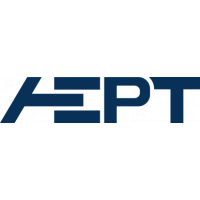Numerous studies have shown that dielectric barrier discharge (DBD) and DBD-like plasma jets
interact with a treated surface in a complex manner. Eroded traces after treatment cannot be
explained by conventional plasma-surface interaction theory. The mechanisms of a controlled
formation of these plasma objects is still unclear. In this work, the authors show that the
formation rate and characteristics of eroded traces, treating a titanium surface, can be controlled
by process design and the combination of materials used. A thin (0.45 µm) layer of titanium
film is deposited onto a glass substrate and is then treated in the effluent of a non-equilibrium
atmospheric pressure plasma jet (N-APPJ) operated with argon or krypton flow. Plasma spots
with diameters ranging from 100–700 µm are observed using an intensified digital camera on
the titanium film surface. These plasma objects are strongly inhomogeneous, forming a core
with a very high current density and leave erosion holes with diameters of about 1 µm. By using
krypton as a working gas, effective erosion of the titanium substrate can be shown, whereas by
using argon no traces are detected. For the latter case, traces can be provoked by deposition of a
thin aluminum layer on top of the titanium substrate, by creation of artificial scratches or by an
additional swirling flow around the discharge. Based on the experimental results presented in
this and previous papers, it is assumed that plasma spots with dense cores are produced by an
interaction of micro-vortices within the plasma channel and by the formation of an extremely
high axial magnetic field. This assumption is confirmed by destruction of the treated surface
material, extraction of paramagnetic atoms and toroidal substrate heating, which is most likely
caused by a helical current of the plasma spot.
| Field | Value |
|---|---|
| Publisher | |
| Authors | |
| Release Date | 2022-04-20 |
| Identifier | 8b475fda-19bb-4415-8ed1-b4f4eaef4813 |
| Permanent Identifier (URI) | |
| Is supplementing | |
| Plasma Source Name | |
| Plasma Source Application | |
| Plasma Source Specification | |
| Plasma Source Properties | The working gas is transported through a quartz capillary with an inner diameter of 1 mm and a wall thickness of 0.25 mm (figure 1). A high-voltage electrode (a coiled copper wire) is placed around the outer surface of the quartz tube at a distance of 50 mm from the open end of the capillary (nozzle of the plasma jet). A high-voltage power supply is used. The high-voltage pulse sequences have a repetition frequency of 5 kHz and a sequence duration of 10 µs each. Every sequence consists of high-voltage pulses with a frequency of about 600 kHz and a damped amplitude. |
| Language | English |
| Plasma Source Procedure | quartz glass capillary (1 mm diameter) need to be adjusted in a certain distance to the substrate; no further procedure is needed. |
| License | |
| Plasma Medium Name | |
| Plasma Medium Properties | atmospheric pressure, gas flow rate: 500 sccm |
| Plasma Target Name | |
| Contact Name | Bibinov, N. |
| Plasma Target Properties | Glass plates with a dimension of 26 mm × 26 mm × 1 mm
(Thermo Fisher Scientific Menzel-Glaeser) coated with a pure, thin titanium film, film thickness: 450 nm |
| Plasma Target Procedure | Glass plates were cleaned with isopropyl before coating
radio-frequency magnetron plasma in argon at a pressure of 2 Pa, deposition time: one hour |
| Contact Email | |
| Public Access Level | Public |
| Plasma Diagnostic Name | |
| Funding Agency | |
| Project | |
| Subproject |


![[Open Data]](https://assets.okfn.org/images/ok_buttons/od_80x15_blue.png)